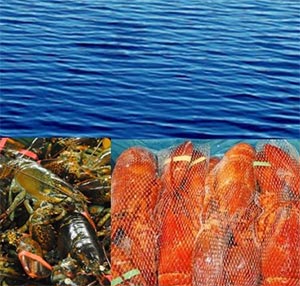The Bay of Fundy, Scotian Shelf and Southern Gulf of St. Lawrence lobster (Homarus americanus) trap fishery (Nova Scotia and New Brunswick) has achieved certification to the Marine Stewardship Council (MSC) standard. Following an independent assessment conducted by SAI Global, lobsters sourced from this fishery are now eligible to bear the blue MSC ecolabel which signifies they come from a well-managed, environmentally sustainable source.
“The MSC congratulates the harvesters, live shippers, processors and buyers/dealers in Nova Scotia and New Brunswick for coming together to achieve this milestone,” said Jay Lugar, MSC’s Toronto-based program director for Canada. “Certification of this fishery is exciting news for both global markets that will welcome this large volume of MSC certified lobster, and for Canada as a global top 10 fishing country. Approximately 67% of all Canadian fisheries are now engaged with the MSC program, further reinforcing Canada’s position as a world leader in seafood sustainability.”
 In 2014 the landed value of all lobster fisheries in Canada was C$853 million, the highest of any fishery in the country. Of that, C$671 million, or 79%, was generated by independent harvesters in the Bay of Fundy, Scotian Shelf and Southern Gulf of St. Lawrence lobster trap fishery (Nova Scotia and New Brunswick), which constitutes the economic backbone of many coastal communities across Atlantic Canada.
In 2014 the landed value of all lobster fisheries in Canada was C$853 million, the highest of any fishery in the country. Of that, C$671 million, or 79%, was generated by independent harvesters in the Bay of Fundy, Scotian Shelf and Southern Gulf of St. Lawrence lobster trap fishery (Nova Scotia and New Brunswick), which constitutes the economic backbone of many coastal communities across Atlantic Canada.
The fishery is located within the Canadian Exclusive Economic Zone (EEZ) and includes 4,152 licensed harvesters operating exclusively in Lobster Fishing Areas (LFAs) 23, 25, 26A and 26B (Unit of Certification 1), LFAs 27 to 33 (Unit of Certification 2), LFA 34 (Unit of Certification 3), and LFAs 35-38 (Unit of Certification 4). In 2014 landings for the fishery were 63,366 metric tons, according to preliminary figures from Canada’s Department of Fisheries and Oceans (DFO), or approximately 75% of the national total landings for lobster.
The main commercial market for the lobster is the United States, followed by Europe (primarily Belgium, France and the United Kingdom) and Asia (primarily China, Japan and South Korea). Lobster from Canada is sold in significant quantities, both in live and processed (frozen lobster tails, whole frozen and lobster meat) formats, to all these markets.
The client group for this fishery is the Nova Scotia and New Brunswick Lobster Eco-Certification Society, which was formed by a collective of interested parties including harvesters, dealers/buyers, shippers, and processors, for the purpose of achieving certification for the fishery. The Society combines the majority of fishermen’s associations in the two provinces, most major processors and many other shippers, buyers and dealers that have supplied lobster from Nova Scotia and New Brunswick to world markets for generations.
“Attaining MSC certification is a tremendous accomplishment for the Canadian lobster industry,” said Eugene O’Leary, president of the Nova Scotia and New Brunswick Lobster Eco-Certification Society. “It is the result of industry cooperation across provincial borders and with competitors, which is in itself an achievement within an industry known for its fierce independence. It helps ensure the long term viability of the resource and favorably positions the largest lobster fishery in Canada in growing international markets. I am personally very proud of all the work that has been done and will continue to be done to maintain certification.”
About the Marine Stewardship Council
The MSC is an international non-profit organization set up to help transform the seafood market to a sustainable basis. It runs the only certification and ecolabeling program for wild-capture fisheries consistent with the ISEAL Code of Good Practice for Setting Social and Environmental Standards and the United Nations Food and Agricultural Organization Guidelines for the Ecolabeling of Fish and Fishery Products from Marine Capture Fisheries.
In total, 373 fisheries are engaged in the MSC program with 259 certified and 114 under full assessment. Together, fisheries already certified or in full assessment record annual catches of around 11 million tons of seafood. This represents approximately 12% of the annual global harvest of wild capture fisheries. Certified fisheries currently land over nine million metric tons of seafood annually – around 10% of the total harvest from wild capture fisheries. Worldwide, more than 27,000 seafood products, which can be traced back to the certified sustainable fisheries, bear the blue MSC ecolabel.





